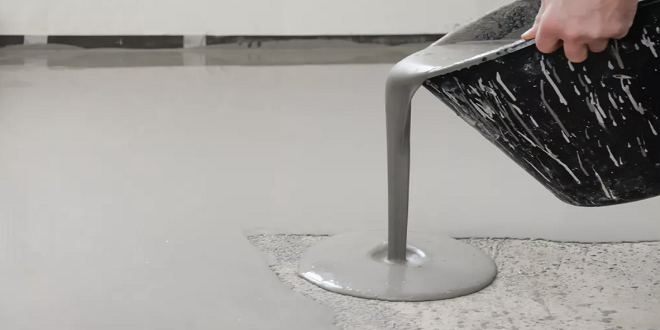What is the difference between floor screed and liquid screed?

Do you have uneven surfaces? You can hire Oxfordshire’s experienced liquid screed contractors to level your floors.
But first, what is screed?
A thin layer of concrete is called screed. This is poured over concrete floors (or underfloor heating pipes) to create a smooth, level surface. This is used in commercial and residential properties, before any final floor finishes, such as vinyl, carpet, or wooden flooring.
It is crucial to choose the right floor screed in order to achieve a professional finish. There are many options for screeds to choose from:
Traditional screed
Anhydrite flowing screed
Rapid hardening screed
Self-leveling screed
Liquid screed
It can be difficult to know which one is the best if you have never used it before. This is especially true when you consider the fact that not all screeds are suitable for every type of flooring.
Traditional screed can still be used for many purposes, but liquid screed contractors from Oxfordshire have revolutionized the industry with their liquid screed alternative. Today we will examine the key differences between liquid screed and traditional screed.
Traditional Floor Screeds Vs. Liquid Screeds
Traditional screeds, also called sand or cement floor screeds, contain cement, reinforced fibers, water, and sharp sand. These screeds are ideal for prepping floors for the desired finish. These are the most cost-effective option on today’s market.
Many industries have relied upon traditional floor screed over the years, from small-scale builders to large commercial contracts and shopfitters.
Modern liquid screed can, despite doing the same job as sand or cement, dry much quicker and requires less work to apply. These are just a few of the many benefits to choosing liquid screed.
It is easier to apply
It reduces labor costs and increases the chance of damage, such as wheelbarrows damaging door frames or underfloor heating pipe.
This liquid screed can be used to quickly cover large areas. It is self-leveling and selfcuring, but still gives you a high-quality finish
It dries quickly
This is a great way to keep projects on budget and on schedule.
It is less likely to shrink than large stone tiles, which makes it an excellent choice.
Traditional Screed
It is cheaper
It is not necessary to prepare much
It can be used for between 8-12 hours in heavy traffic areas.
It conforms with BS EN 13813 requirements
It is suitable for underfloor heating
If required, it can be pumped at the site.
It is compatible with all floor finishes
The Benefits of Liquid Screed
It’s quick-drying
It has a high compressive strength
It is less labor-intensive
It is less prone to cracking/shrinkage.
There are lower labor costs
It is suitable for underfloor heating
It is self-curing, providing a level finish
We recommend consulting an professional liquid screed contractor to install underfloor heating or floor screeding on large surfaces. This will ensure safety and efficiency.
Are you torn between traditional and liquid screed?
It can be difficult to determine which type of floor screed is best for your home or work environment if you are not a professional contractor. Consider liquid screed. This is the best option in most cases. It’s easier to hire a professional liquid-scraperin Oxfordshire. You can relax and enjoy the final product while they do the work for you. If you have any questions, don’t hesitate to contact professionals.



